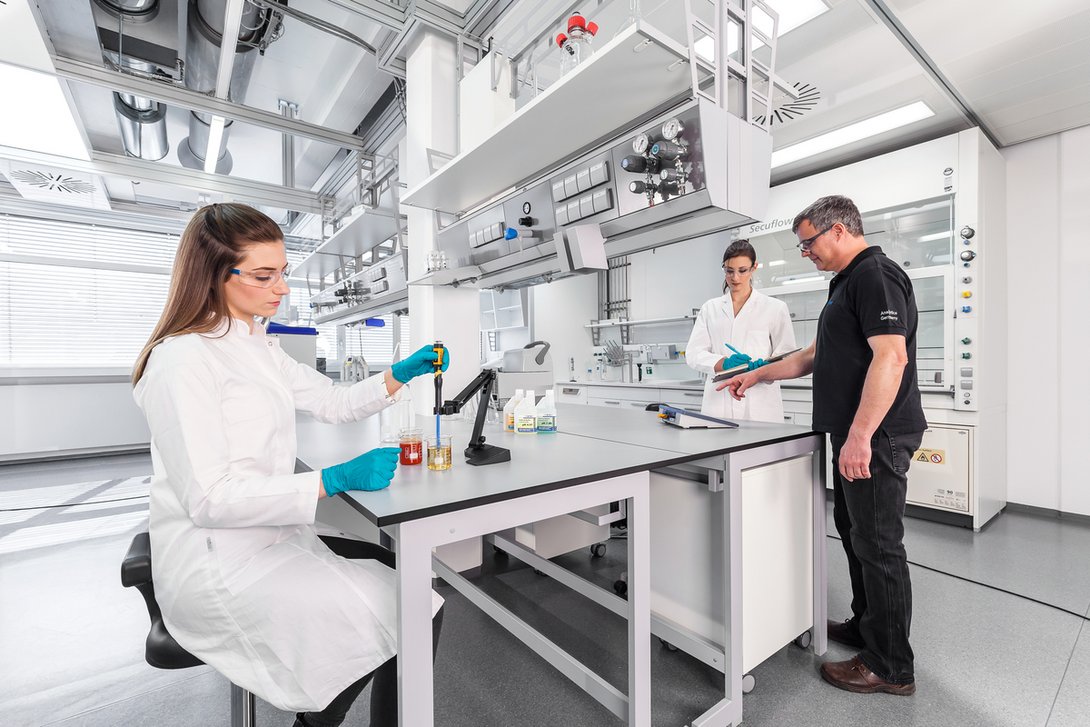Get moving - even in the lab!
Demographic change has been a hot topic for a while, not to mention the labour shortage. For companies, employee retention – and keeping them fit and healthy – is becoming evermore important. Often, even small changes help, including changes in attitude.
Why complicate things when they can be easy? This is a premise that many people live by. After all, we want to make our private lives and our working lives as pleasant as possible. So we arrange our desks so that everything is within easy reach, and invent robots that do the monotonous, heavy or dangerous work for us. This is good.
But it also means that we are sitting more and more – even in the laboratory. And this is not good. Researchers have been saying for a long while, that sitting is the new smoking. But standing all the time is also not good, and lying down all the time certainly isn’t. Essentially, the next posture is always the best one, i.e. changing positions does you good. Don’t stay stuck in one position. By the way, this also helps in terms of having a (re)think.
And while we’re on the subject of having a rethink: research shows that it’s not having a young workforce that is the silver bullet, but that often mixed teams of young and old in particular turn out to be effective – with experience and knowledge coming into contact with fresh ideas. And in any case, due to the change in demographics and the associated labour shortage, it will soon be the case that we won’t be able to do without a single good, experienced employee. Therefore, we should ensure that employees remain fit and healthy for as long as possible – which is known to be something that starts in one’s younger years. It is also necessary to consider where and how we can employ those who are no longer suitable for employment in all areas.
We like sitting down
When it comes to heavy manual labour, it is now possible to find exoskeletons on the market, which support workers and protect them against one-sided or heavy loads. It is more difficult, however, to help those who spend a lot of time sitting in front of the PC. There is no exoskeleton for this, rather a strong basic instinct to stay in one’s comfort zone and – as already mentioned – a wellorganised desk. Both of these factors deter employees from moving. An external trigger can help, e.g. bosses who lead by example by holding standing meetings (which also means they don’t go on for as long). It’s also possible to trick yourself into moving more, e.g. by – rather impractically – placing the phone and mobile out of reach on a higher table so that you have to stand up to answer it when it rings. If you work in a room with others, you can encourage one another to do some brief stretching or strength exercises. Perhaps that will be the trigger of the future. Instead of “Are you going to come for a smoke?”, it will be “Fancy going for a walk around the block?”

0 Comments
No Comments